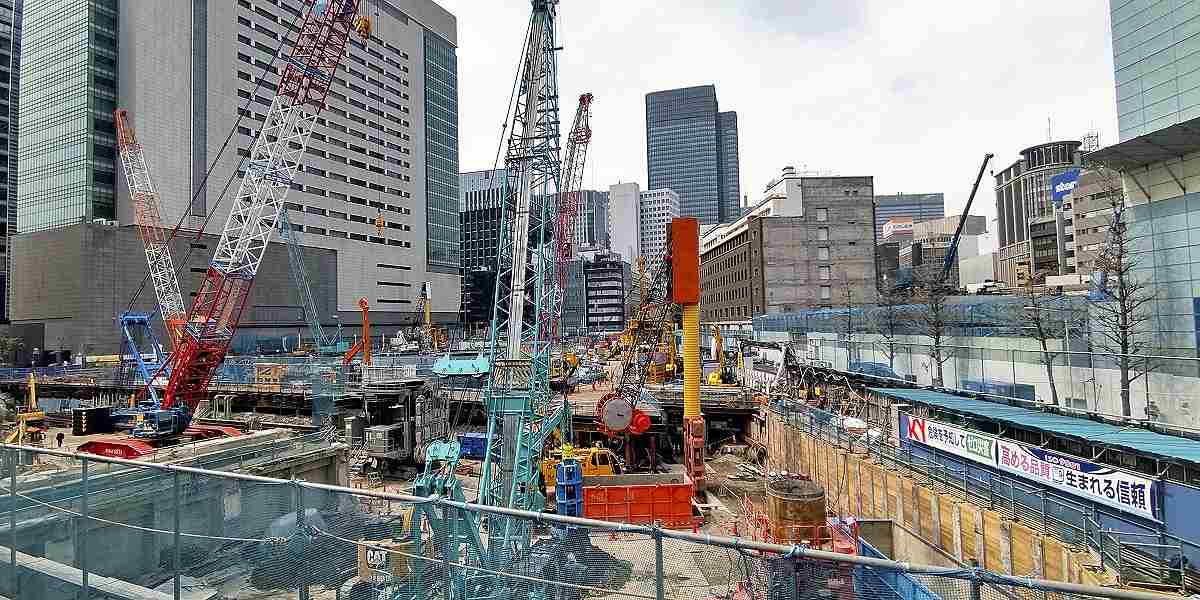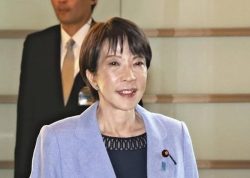Plan Considered to Calculate Buildings’ Lifetime CO2 Output; Japan Government Seeking to Decarbonize Construction Sector

A construction site in Tokyo
16:10 JST, January 6, 2025
The government is discussing a plan to require owners and builders to calculate the amount of carbon dioxide that will be emitted when constructing, managing and demolishing buildings.
The government aims to decarbonize the construction sector by quantifying CO2 emissions that affect the environment, and will confirm by March a schedule to realize the plan. The government hopes to submit a related bill to an ordinary Diet session in 2026.
Owners of new construction of a certain size or larger will be required to calculate the project’s lifetime CO2 emissions as part of a life cycle assessment, known as LCA. CO2 emissions would be calculated at all stages of a structure’s lifecycle: from procurement and the manufacturing of materials to construction, use, repair, maintenance and demolition.
The relevant stages also include waste transportation and disposal. CO2 emissions are expected in the processes of iron manufacturing in blast furnaces, transportation by vehicle, use of heavy machinery in construction and demolition. It will also include the use of air conditioning when a building is in use.
According to the International Energy Agency, the buildings sector accounted for about 37% of global CO2 emissions in 2022.
Japan has focused on emission cuts during building use, through such means as encouraging owners to introduce high-efficiency air conditioning equipment, but has been less active in other stages. Quantifying CO2 emissions is expected to encourage builders to make efforts.
Europe has taken the lead in such LCA initiatives. The European Commission decided in April 2024 that CO2 emissions must be calculated and disclosed for new buildings in the European Union that exceed a certain size, beginning in 2028. The scope will be extended to cover all new buildings from 2030.
France and Denmark have introduced emissions cap regulations.
In Japan, a liaison conference of relevant entities — including the Land, Infrastructure, Transport and Tourism Ministry, the Economy, Trade and Industry Ministry and the Environment Ministry — was established within the Cabinet Secretariat in November. Discussions on establishing a system have begun.
The conference will discuss methods for calculating the amount of CO2 generated during the manufacturing process for the materials. It will also decide how large a building must be for calculations to be mandatory, and a method for disclosing the calculated results.
The government will establish the mandatory system first, with the hope of introducing a cap on lifetime CO2 emissions in the future.
"Politics" POPULAR ARTICLE
-

Japan to Support Central Asian Logistics Route That Bypasses Russia, Plan to Be Part of Upcoming Summit in Tokyo
-

Japan to Tighten Screening of Foreigners’ Residential Status by Providing Information of Nonpayment of Taxes
-

Chinese, Russian Bombers Flew Unusual Path by Heading Toward Tokyo; Move Likely Meant to Intimidate Japan
-

Japan Plans National Database to Track Foreign Ownership of Real Estate, Land as It Weighs New Rules
-

Up to 199,000 Deaths Estimated From Mega-Tsunami; Most Recent Occurrence Took Place in 17th Century
JN ACCESS RANKING
-

Tokyo Economic Security Forum to Hold Inaugural Meeting Amid Tense Global Environment
-

Keidanren Chairman Yoshinobu Tsutsui Visits Kashiwazaki-Kariwa Nuclear Power Plant; Inspects New Emergency Safety System
-

Imports of Rare Earths from China Facing Delays, May Be Caused by Deterioration of Japan-China Relations
-

University of Tokyo Professor Discusses Japanese Economic Security in Interview Ahead of Forum
-

Japan Pulls out of Vietnam Nuclear Project, Complicating Hanoi’s Power Plans























